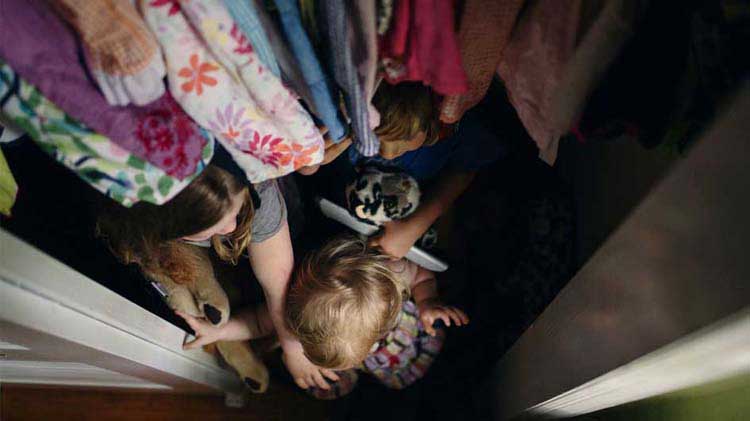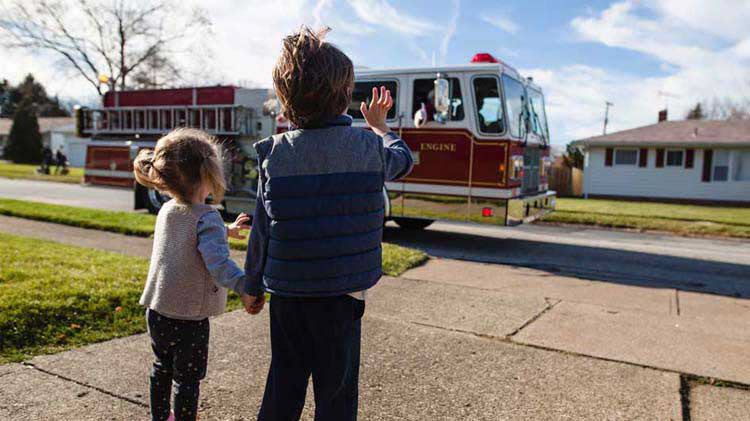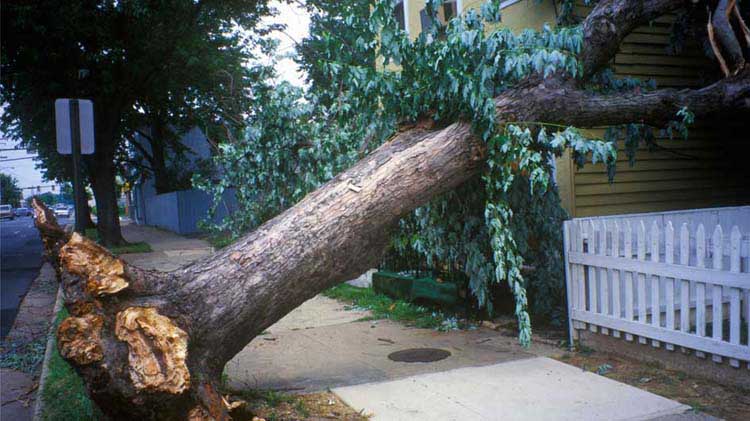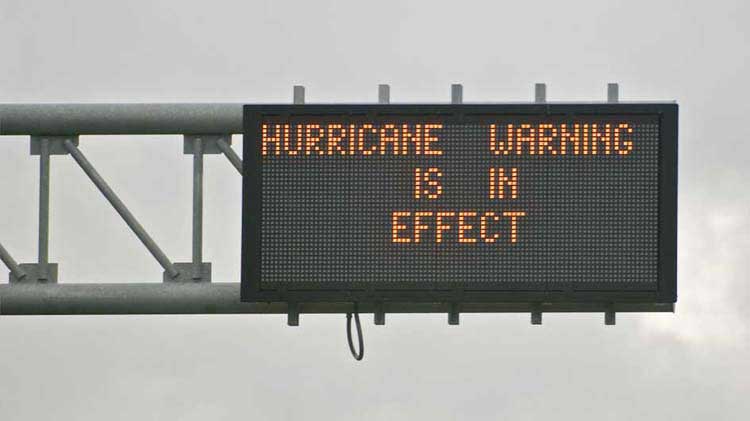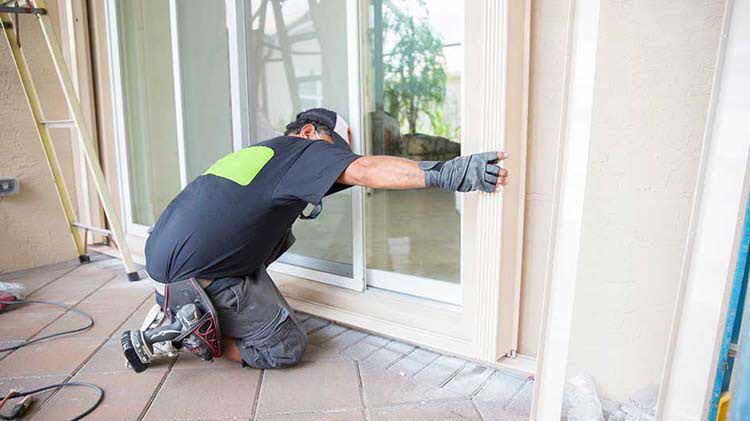How a storm shelter or safe room can help protect against severe weather
Constructing a safe room within your home can help protect you from natural disasters and weather emergencies.
During severe weather, natural disasters and severe wind events, having a safe and secure room to go to is important. Disaster-preparedness guides often instruct you to head to your basement, but not all homes have that choice, and it’s not always the safest option due to the possibility of broken windows, flying debris and the potential for flooding. Storm shelters and safe rooms can help provide protection from severe winds and tornadoes. Many shelters are constructed in a basement, above-ground or in-ground.
How a safe room helped protect one family
Kevin and Sarabeth Harrison, with their two children, huddled inside a safe room that Kevin and his father built inside their detached garage. After the storm, the garage was gone. The only thing left standing was their safe room. This Alabama family survived the massive tornado strike that ripped through their Athens neighborhood, killing nearly 250 people. For this family, having a safe room helped protect them from the dangerous forces of nature.
Should I consider building a storm shelter or a safe room?
Storm shelters
Storm shelters or storm cellars are usually underground and designed to help protect people and pets from violent weather and tornadoes. Shelters are most often seen in Southeastern and Midwest areas of the United States where tornadoes are frequent, and a low water table allows underground structures. Storm shelters can be a practical and safe addition for homeowners or property owners.
Some shelters are built onto or within a home, and some are built on a homeowner's property. A suitable shelter depends on your location, the size of your family and your home's condition. For example, if you're in an area with a high risk of hurricanes, you may want to consider a larger shelter because you might have to wait out the storm for hours, whereas tornadoes pass by relatively quickly.
Safe rooms
A safe room is an area in your home or garage that is reinforced to help provide protection from debris, broken glass and other hazards. Many people design and construct a safe room as part of their disaster preparedness plan and emergency plan for their residence.
How are safe rooms constructed?
Generally, safe rooms are either built onto an existing home or included in new home construction. There are pre-manufactured safe rooms that can be added, as well. The safe room plans, researched by Texas Tech University, come in a variety of designs for rooms in the basement and rooms on the main floor for homes without basements.
Safe rooms are typically built out of reinforced concrete, reinforced concrete block or wood-framed walls with plywood and steel sheathing. The room is covered with a similar structural ceiling/roof that is independent of the house structure. Everything is tied down to the foundation from the top of the safe room to help resist the uplift forces generated during a tornado or hurricane. The exterior materials and structure of the safe room are generally impact-resistant to help protect the occupants from wind-borne debris.
Homeowners can build or retrofit the interior spaces of their home or garage to safe-room standards or choose to buy prefabricated safe rooms designed to withstand tornado-force winds. Closets, bathrooms, laundry rooms and outdoor rooms like garden sheds and pool houses can also be enhanced to serve as safe rooms.
What costs are involved?
According to Angi, the cost for a shelter can depend on where it is located. A garage shelter could run between $3,000-$9,000, a basement storm shelter could cost between $6,000-$15,000 and a safe room could be between $3,000-$10,000.
Factors that can affect cost include:
- Size and location of the room or shelter.
- Whether you are building a safe room in a new home or retrofitting an existing home.
- Construction materials (concrete, wood, insulated concrete form).
- Type of foundation on which the house is built.
- Excavation costs.
- Depth of footing (cost estimates are based on a minimum depth of 2 feet, 6 inches).
- The geographic location within the United States (regional variations in labor and material costs).
- Added amenities (e.g., bathroom fixtures).
- Installation of the safe room door assembly.
Pre-manufactured safe room costs
Pre-manufactured safe rooms typically cost less than site-built safe rooms and are available in smaller sizes. This type is typically installed outside the home, and some are in-ground. Costs involved typically include the unit, delivery, labor and any foundation or geotechnical work that may be needed to install the unit. If a supporting foundation is needed, the cost of a reinforced concrete slab for anchoring will need to be factored in.
Do it yourself or hire a contractor?
If you decide to create a homemade safe room, take time to plan and understand the costs and time involved, and that the room or shelter meets all applicable Federal Emergency Management Agency (FEMA) standards. If you plan on hiring the work, the National Association of Home Builders offers tips when looking for a professional contractor.
- Basement shelters could be the easiest to build into a corner of your existing basement. However, not all existing walls may meet FEMA’s standard of being reinforced with steel, which will help withstand damage from wind and debris.
- In-ground shelters could be easy to work into a home plan as it’s being built. Installing an in-ground shelter in an existing home could be more difficult due to the excavation for adding a storm shelter or safe room to a basement.
- Above-ground shelters could be built, or a pre-manufactured shelter could be purchased. An above-ground structure should be firmly attached to a reinforced slab.
Storm shelter pros and cons
Pros for shelters
- Basement shelters — because it’s below ground, a basement shelter can help provide the most protection from debris. Depending on your basement’s features, this can be one of the easiest and cheapest ways to install a shelter in an existing home.
- In-ground shelters — installing a shelter below a concrete slab — the one that forms your garage’s floor, for example — can be a good way to carve out room when space is at a premium.
- Above ground shelters — if you don’t have a lot of space in your house, creating an adjacent above-ground storm shelter might make sense. A separate above-ground space might also be the best bet for areas with high water tables. For maximum security, the shelter’s walls must be separate from those of the main structure, and they need solid reinforcement.
Cons for shelters
- Basement shelters — by converting all or part of a basement into a storm shelter, you give up storage space. And basement shelters aren't appropriate in areas that might flood during a hurricane or storm surge.
- In-ground shelters — depending on the size of your slab, these shelters may be smaller. That might be fine if you're waiting out a tornado, but less comfortable for a longer-lasting storm such as a hurricane. Like basement safe rooms, shelters built under slabs aren't appropriate for flood-prone regions. Take care to ensure that any mobility-challenged family members can make it into the shelter without difficulty.
- Above-ground shelter — an above-ground shelter may require a separate entrance. If you must leave your home to get to the shelter, see that the shelter is nearby and that you can get into it as quickly and easily as possible.
When a weather emergency hits, having an emergency plan and your emergency kits is important. Also check that your home insurance coverages are up to date and contact an agent if you have any questions.
State Farm customers impacted by severe weather can call 800-732-5246, contact their agent or file a claim online.
